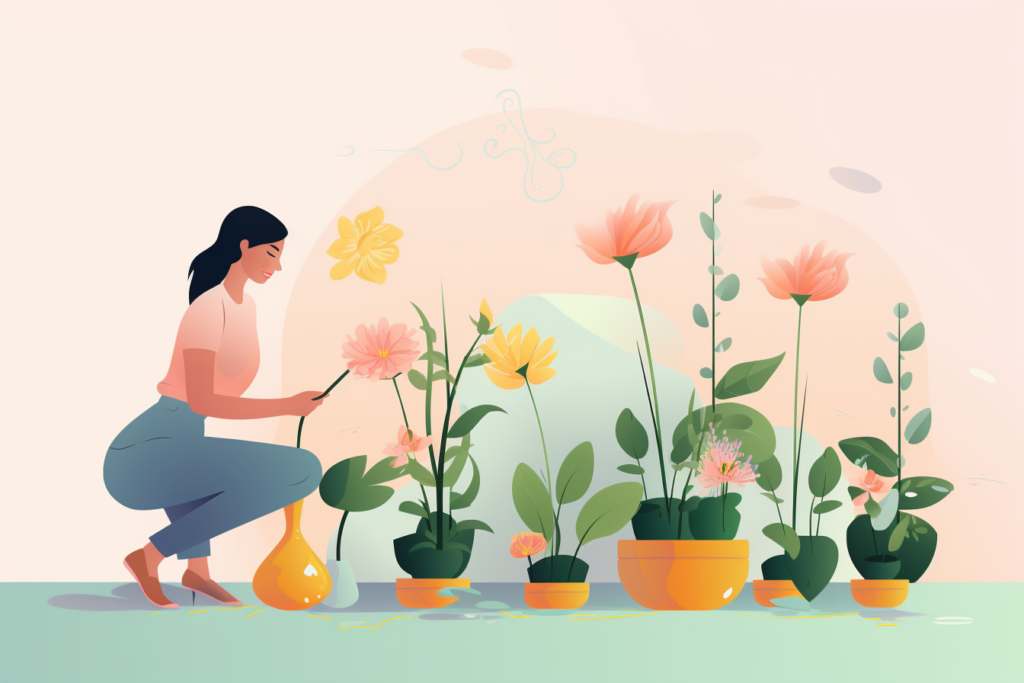Spring symbolizes renewal and rejuvenation, and what better way to embrace this season than by planting vibrant and colorful flowers in your garden? The right selection of blooms can transform your outdoor space into a lively oasis, attracting pollinators while adding beauty and charm. We’ll explore some of the best flowers to plant this spring, considering their ease of care, ability to thrive in various climates and how they add to the aesthetic of your home.
1. Tulips
A quintessential symbol of spring, tulips come in several colors, shapes, and sizes, making them a versatile choice for any garden. Planting tulip bulbs in the early fall is the best time to curate a spectacular spring display. They prefer well-drained soil and need full to partial sunlight to thrive. These vibrant blooms can grace your garden from early to late spring with proper care.
2. Daffodils
Daffodils are hardy, dependable perennials with cheerful yellow blooms that signal spring’s arrival. They are easy to grow, making them a great option for beginners and can thrive in a range of soil types, though they also need well-drained soil and full or partial sun. Plant the bulbs in the fall, and enjoy their bright flowers from late winter to early spring. Daffodils are also resistant to most pests and diseases, making them a low-maintenance option for gardeners.
3. Pansies
Pansies are known for their charming, colorful faces and ability to withstand cooler temperatures. These annuals can be planted in early spring and will bloom into early summer, offering a long season of color. Pansies perform best in cooler spring weather and can be planted in containers and garden beds. Similarly to the others on this list, they do their best with well-drained soil and full to partial sunlight.
4. Primroses
Primroses come in a variety of vibrant colors and are one of the first flowers to bloom in spring, often while the last winter snows are melting. These perennials prefer moist, well-drained soil and partial shade, making them ideal for woodland gardens or shady borders. With proper care, primroses can provide a pop of color early in the season.
5. Hyacinths

Hyacinths are beloved for their fragrant, densely packed spikes of flowers. Available in shades of blue, purple, pink, white, and yellow, these spring bloomers can add both color and sweet scent to your garden. Plant the bulbs in the fall in well-drained soil and place them in a spot that receives full sun to partial shade. Hyacinths are perfect for borders, containers, or as a fragrant addition to your cutting garden.
6. Peonies
Peonies are perennial favorites that boast lush, voluminous blooms that appear late spring into early summer. They come in shades of pink, red, white, and yellow. Peonies require well-drained soil and full sun to bloom their best. Though they take a few years to establish, peonies are long-lived plants that can flourish for decades with minimal care, making them a worthwhile investment for any garden.
7. Forget-Me-Nots
These delicate, sky-blue flowers with tiny yellow centers are perfect for adding a sprinkle of whimsy to your spring garden. Forget-me-nots thrive in moist, well-drained soil and partial shade. They are excellent for borders, woodland gardens, or as a complement to spring bulbs. These flowers are also known for their ability to self-seed, ensuring their return year after year.
8. Snapdragons
Snapdragons are unique for their tall spikes of brightly colored flowers, which come in almost every hue. They prefer cooler spring temperatures and can be planted in early spring. Snapdragons need well-drained soil and full sun to partial shade. They are ideal for adding height and color to borders and make excellent cut flowers for arrangements.
9. Lilacs
Lilacs are beloved for their fragrant purple, pink, or white flower clusters. These shrubs perform best in well-drained soil and full sun. While they may take a few years to start blooming profusely, the wait is worth it for their aromatic display in late spring. Lilacs are excellent as stand-alone specimens or as part of a hedge or border.
10. Iris
Irises are striking flowers with distinctive, elegant blooms in a range of colors, including purple, yellow, blue and white. They do the best in full sun and well-drained soil but can tolerate partial shade. There are many varieties of iris, some blooming in early spring and others in late spring to early summer, allowing for a succession of blooms.
Gardening Tips for Spring Flowers
Spring heralds a season of renewal and growth, making it an ideal time to start or rejuvenate a garden. Here are essential gardening tips to ensure a vibrant display of spring flowers:
- Prepare the Soil: Before planting, enrich your garden soil. Both organic matter and compost to improve drainage and nutrient content.
- Consider Your Climate: Choose flowers that are suited to your local climate and hardiness zone for the best results.
- Know Your Frost Dates: Planting should be timed based on your area’s last expected frost date to avoid damaging tender plants.
- Start Seeds Indoors: For a head start, begin with seedlings indoors 6-8 weeks before the last frost, then transplant them outdoors when the weather warms.
- Proper Spacing: Give each plant enough room to grow based on its mature size. Overcrowding can lead to moisture and air circulation issues, making plants more susceptible to disease.
- Depth Matters: Plant bulbs and seeds at the correct depth as recommended for each species. This information is typically found on seed packets or plant tags.
- Regular Watering: Young plants and seedlings require consistent moisture to establish roots. Water in the morning to reduce evaporation and allow foliage to dry, reducing the risk of fungal diseases.
- Fertilize Appropriately: Use a balanced, slow-release fertilizer to provide nutrients over time.
- Monitor Regularly: Check plants for signs of pests and diseases. Early detection is key to managing outbreaks.
- Prune for Health: Remove any dead or diseased branches from shrubs and perennials to encourage healthy growth and flowering.
- Plan for Continuous Blooms: Plant a mix of early, mid-season, and late-blooming flowers to ensure a continuous display of color throughout the season.
- Take Time to Enjoy: Gardening is not just about the end result. Enjoy the process, and take time to appreciate the beauty and tranquility of your garden.
By following these tips, you can create a flourishing spring garden that brings joy and color to your outdoor space. Gardening is a rewarding activity that enhances your surroundings and benefits the environment by supporting pollinators and local wildlife.
You might also be interested in: 7 Stunning Outdoor Fireplaces To Transform Your Summer Evenings




